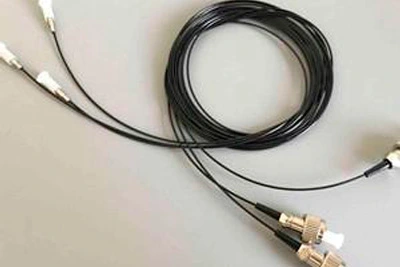The laser used for measurement is much more accurate than a standard tape measure, and allows you to simply place and measure, rather than actually measuring the distance between points.
However, choosing the right laser measurement for your next project can be difficult because there are so many different models on the market. In addition, there are two different types of laser measurement equipment: red lasers and green lasers. The difference between these two lasers is not only the color. Therefore, it is important to understand how different color lasers affect their measurement capabilities and which types of projects each red and green lasers are most suitable for.
Compared with traditional measurement equipment, laser measurement has many advantages, especially when there is no assistant. For the builder, the most important advantage is speed-point the laser at a far point and then measure the distance, which is much faster than walking to that point with a tape measure.
In addition, compared with traditional measurement equipment, laser measurement allows you to continue to measure the distance while you or your target point is moving, because they are constantly measuring. Most laser levels provide fast sampling, and when the target or laser moves, the displayed distance can be updated in near real time.
Another reason for using laser measurement is that you can measure distance, which is not practical at all with traditional measuring tapes. In these cases, if there is no leaker measurement, you will need to hire a survey team-which is time-consuming and expensive.
Finally, the laser measurement can be retained, so you can use the measurement equipment to guide your work. For example, when making sensitive cuts or placing nails, this is helpful because the laser used for measurement will give you a definite target in the form of light.
The color difference between the red laser and the green laser is the result of the different techniques used to generate these two beams, which in turn results in lasers that are emitted at different wavelengths. A red laser produces light with a wavelength of 620-670 nanometers, which is red to the human eye, while a green laser produces light with a wavelength of 515-530 nanometers, which is green to the human eye.
In a dark workshop, it is easy to see your laser used for measurement, regardless of whether the laser is red or green. However, once the lights are turned on, green lasers have a significant advantage over red lasers because they appear brighter to the human eye. The reason is that the green wavelength is closer to the center of visible light than the red wavelength. On average, under the same output power, the brightness of the green laser is about four times that of the red laser.
This makes it easier for the builder to see where the green laser hits under bright lights, and for the red laser, you might guess what your laser is aiming at. In addition, the use of green laser measurement can save installation time and eliminate the need to use laser detectors on certain projects.
Although the green laser and the red laser usually work at the same total output power, the power required to produce the green laser is higher than the power required to produce the red laser. Therefore, green laser measurement usually requires more frequent battery replacement than red laser measurement, otherwise a larger battery pack will be used. For the same size battery, the duration of the red laser is approximately twice that of the green laser.
The reason why the green laser measure seems to have only recently entered the market is that the price has dropped significantly due to the new light-emitting technology. However, green laser measurements are still much more expensive than red laser measurements because they require more expensive diodes, more components, and more crystals to guide the laser. Generally speaking, the price of green lasers is 25% higher than similar red lasers, which is why most workshop tools use red lasers for targeting.
If you are willing to bear the additional cost of a green laser measuring instrument, rarely sometimes it is not a better choice than a red laser measuring instrument. In dark conditions, red and green laser measures are equally effective. In this case, compared with the green laser, some builders prefer the sharper lines produced by the red laser, but the difference is small.
When the room gets brighter, the light produced by the green laser can still be seen farther away, while the red laser becomes harder and harder to see. In this case, the green laser is significantly better than the red laser because it can save time by continuing to work without a laser detector. However, if the measured distance is relatively small, a red laser can still be used.
When it comes to outdoor use, the advantage of green lasers under strong light begins to disappear. This is because in sunny outdoor conditions, even if the distance you measure is relatively short, you need to pair the laser with the detector. The important thing is that green lasers dissipate faster than red lasers in bright outdoor light, which means that at long distances, green lasers are actually more difficult to measure than red lasers.
In both cases, if you plan to use your laser to measure outdoor projects, you will need a laser that is compatible with the laser detector.
The use of the correct laser for measurement is very important to complete the construction project quickly, effectively and accurately. Although red lasers are suitable for use in dark workshops and relatively short ranges, green lasers tend to perform better under bright ambient light. However, green lasers are much more expensive than red lasers, and both require the use of laser detectors in bright outdoor environments.

